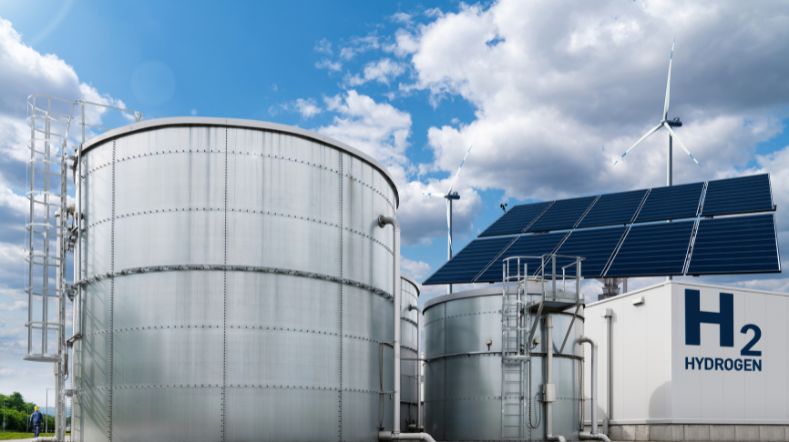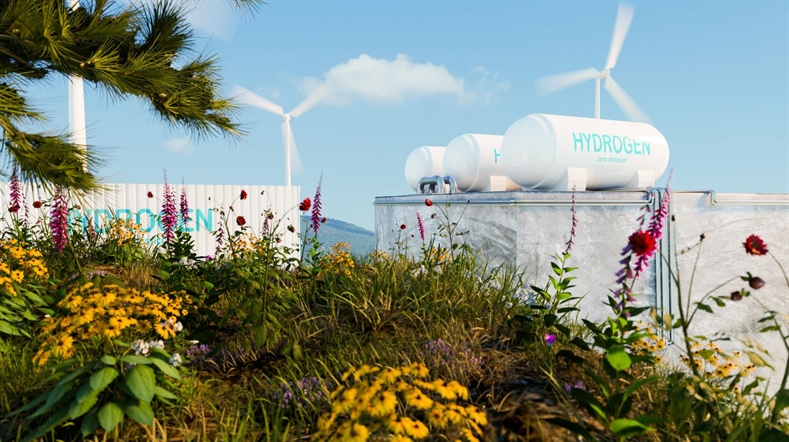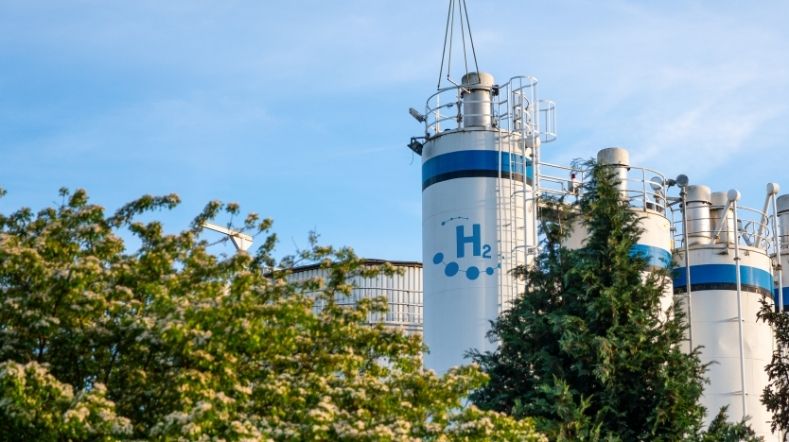Breakthrough electrolyser development: 200 times less iridium needed
Produced via electrolysis using electricity from the sun and wind, green hydrogen has a crucial role to play in the energy transition. Iridium is a scarce material that is presently essential to electrolysers working with the commonly used Proton Exchange Membrane (PEM) technology. Researchers at TNO have been the first to develop a method that will require 200 times less iridium where a performance of 25% - 46% of the current generation of electrolysers can already be achieved. A patent application has been made for this method.
‘The expected growth of green hydrogen from 300 megawatts in 2020 to tens of gigawatts in 2030 has a flipside’, explains TNO expert, Lennart van der Burg. ‘It implies a proportionately growing demand for the scarce iridium for the electrolysers that will need to be built. Earlier TNO research revealed that the scaling up of electrolysis could be hampered by the extremely limited availability of scarce resources, especially iridium and platinum. In ten years’ time, the demand for iridium will vastly exceed its availability. Moreover, we rely on a small group of countries for its delivery, with all the risks that implies.’
Technological breakthrough
The fact that we are reducing the required iridium by a factor of 200, while already achieving an average of one third of the performance of current electrolysers, is a technological breakthrough,' says Van der Burg. TNO researchers of the Faraday Lab in Petten, specialised in electrolysis, collaborated with colleagues from the Holst Centre in Eindhoven. TNO previously developed the spatial Atomic Layer Deposition (sALD) technology here, a method to apply extremely thin layers of functional materials to large surface areas. This technology was intended to birth the next generation of television, tablet, and smartphone displays. The research team has now also made the technology applicable to electrolysers.

‘The fact that we are reducing the required iridium by a factor of 200, while already achieving an average of one third of the performance of current electrolysers, is a technological breakthrough.’
Stability demonstrated
TNO has spent the last two years experimenting with the sALD technology. Researchers applied an ultrathin layer of iridium as a catalyst material on a porous transport layer of titanium, instead of on a membrane, as is presently customary. The functioning and stability of the new method has been proven after different lab tests. Little to no degradation occurred after initial stress testing. On top of this, the electrolyser’s membrane remains iridium-free, making it easier to recycle and reuse.
Scaling up necessary
Together with a group of leading industrial partners and within the Voltachem program, TNO is working on moving this promising technology from the lab to practice. For this, the method needs to be scaled up to pilot scale to demonstrate its functioning under real-life conditions.
‘We’re not there yet’, warns van der Burg. ‘We’ve shown that the technology works in the lab, but we need to continue developing it to improve its lifespan, efficiency, and our capacity to produce it at scale. Previously, TNO and several other European knowledge institutes, already requested setting demands on the use of scarce materials when carrying out large pilot projects. It should be possible to apply the technology at a large scale in 2030. In this year the European target of installed electrolysis capacity is set at 40 GW, which is by than hopefully using much smaller amounts of scarce materials.’

Read more about our studies:
We are working in various ways on optimising and reducing the cost of producing green hydrogen. Electrolysis is a proven technology. But there are still several challenges for its large-scale deployment. Learn more about electrolysis >
In Europe's largest Hydrogen Research Facility, Faraday laboratorium, TNO is working on technological breakthroughs to scale this up. Learn more about the Faraday Lab >
To develop and promote hydrogen technology with Dutch companies, cooperating parties including TNO have set clear goals in the HyScaling project. One of those goals is the need for electrolysers with better performance to produce green hydrogen. In addition, hydrogen production must also be more efficient and less expensive if a good production chain is to be developed for it. More information on HyScaling project >
The Netherlands is fully committed to developing the hydrogen economy: replacing fossil fuels with (green) hydrogen from sustainable sources such as sun and wind. However, an important aspect remains underexposed in the plans: there is a threat of a major shortage of the raw materials needed for the electrolysers that produce the hydrogen. More information about shortage of materials >
To achieve the climate targets, we need to be very aware of the availability of raw materials. According to our calculations, stocks are not sufficient for the amount of hydrogen that we want to produce through electrolysis, for example. We must prioritise this problem as a matter of urgency if the energy transition is to succeed. More information about the role of hydrogen in the energy transition >
Get inspired
Hydrogen in the energy system: The future of sustainable energy in the Netherlands and Europe


NORCE and TNO are entering into a strategic partnership on hydrogen developments


Dutch consortium participates in EU research project on large-scale hydrogen storage in depleted gas fields


Underground hydrogen storage


Collaboration TNO and Elcogen for development Solid Oxide Electrification Technology in Europe


